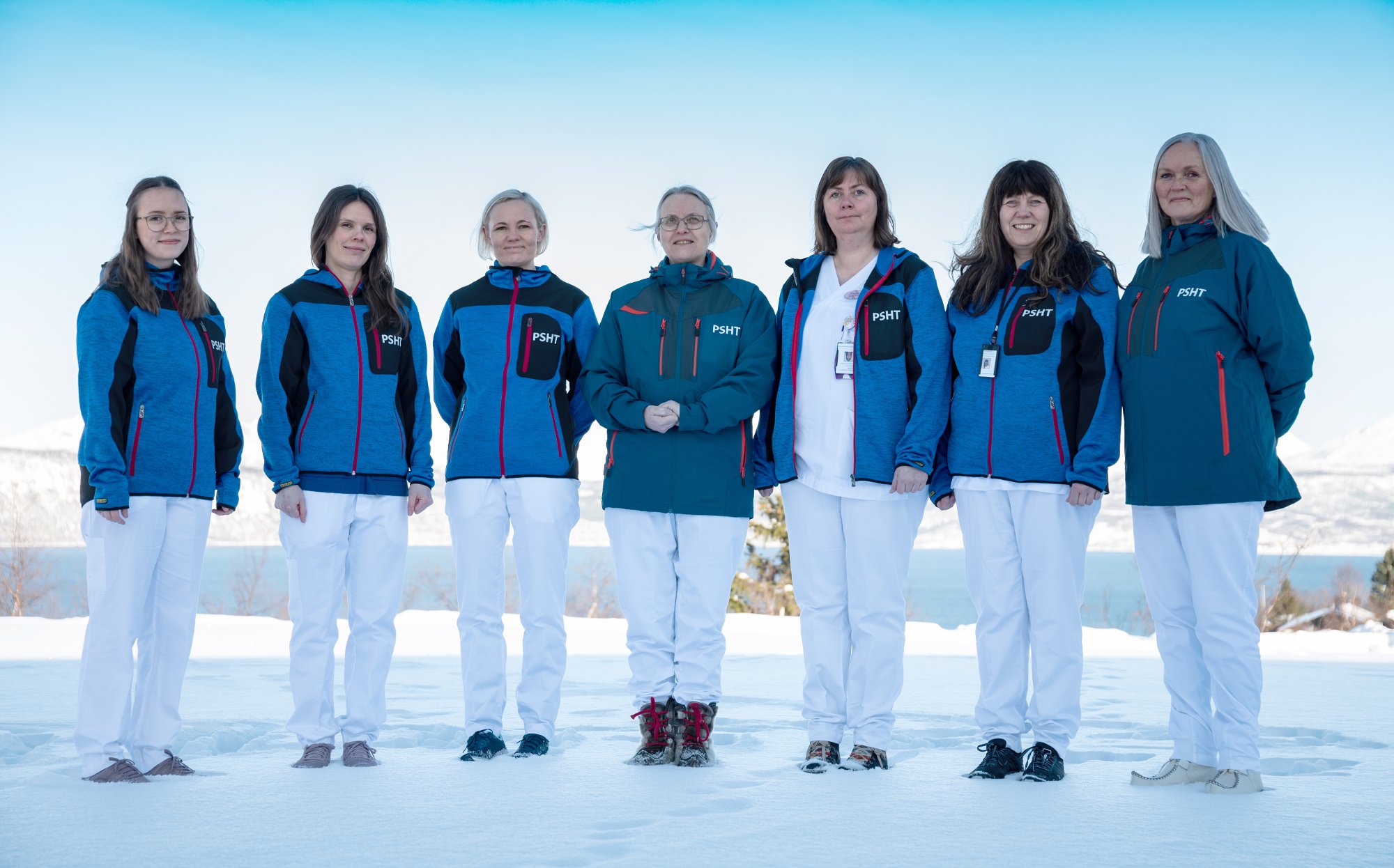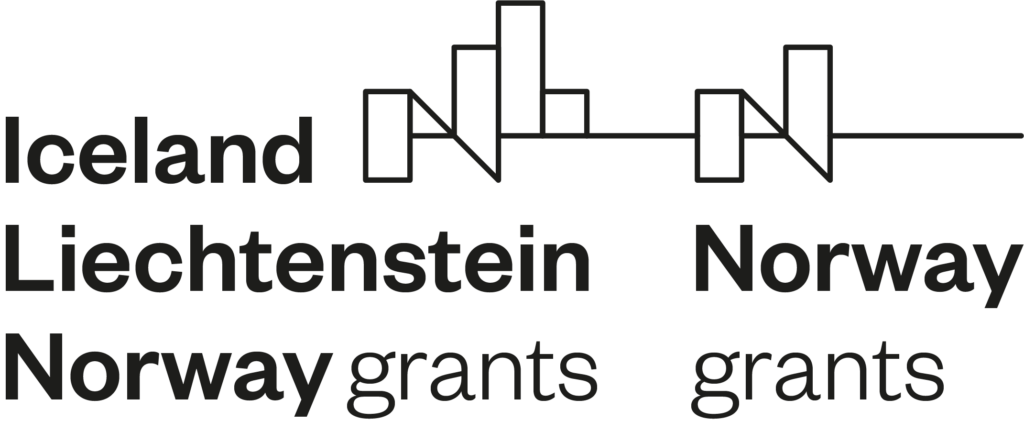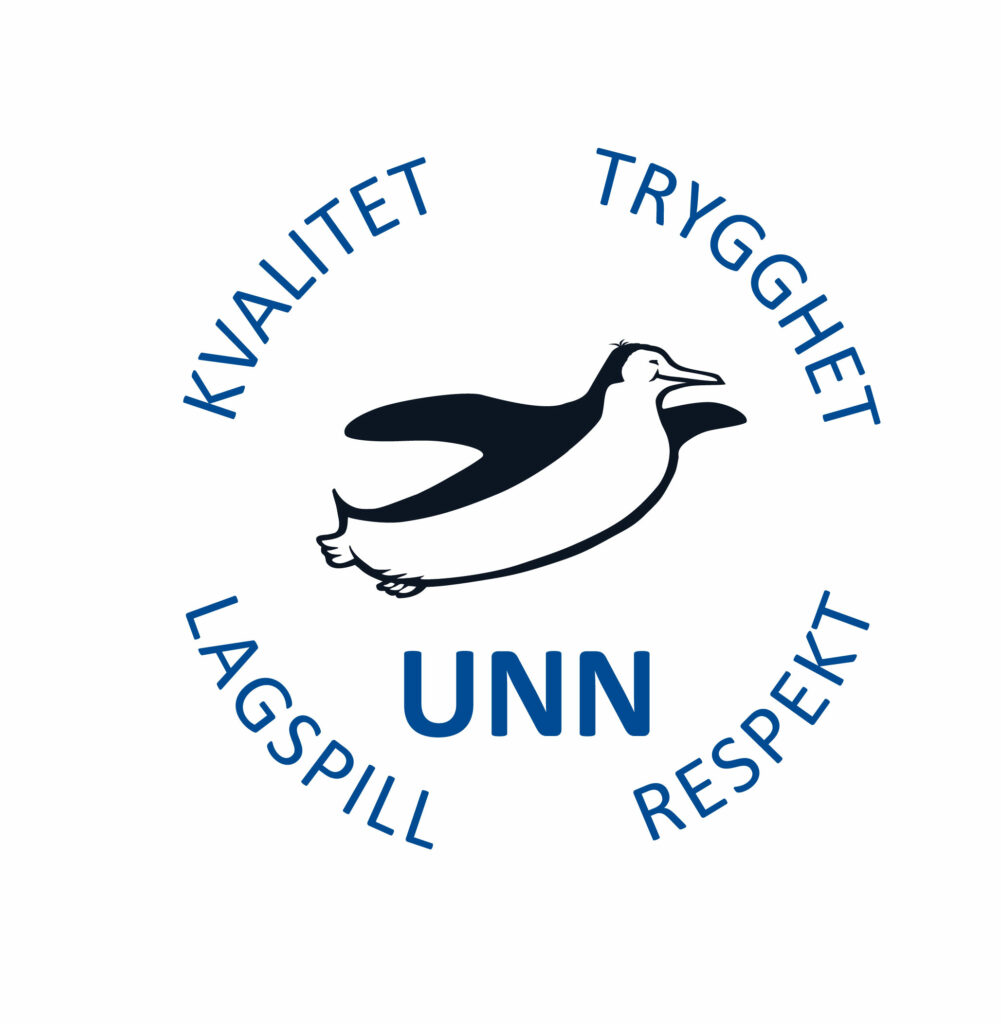
Practice of PCC
How do we work?
How do we provide a person-centred health service jointly: hospital-municipality? We need to collaborate especially closely and holistically on Identifying relevant patients.
Healthcare professionals in both the Municipal Health Service and the Specialist Health Service follow up on patients they see a need to collaborate especially closely on. This often applies to patients of all ages with many diseases and complex challenges, where many different actors are involved in the patient's treatment and follow-up.

1. Consent
Before we can start a collaboration across hospitals and municipalities, we need to ensure that the patient is informed and consents to an extended collaboration. Some of the patient-centred teams have access to the patient's medical records, both in hospitals and municipalities, and consent allows the teams to retrieve necessary information from both patient records.
2. Referral
A patient can be referred to the health service team by their general practitioner (GP), the allocation office, home care services, nursing homes or doctors/nurses in departments at the University Hospital of North Norway (UNN). Patients and their relatives can also contact the team. If someone other than the GP/treating doctor at UNN refers the patient, the team must inform the GP/treating doctor when the team offers services.

From municipal health services that do not have access to each other's medical records system, referrals are handed over as follows:
- Physiotherapist, occupational therapist, home care services: Either via dialogue and conversation, and written material is handed over to the team.
- Patient/relatives: Via phone call or direct contact. Continued in two ways: either as an email written by the patient/relative themselves - without identifying information about the person concerned, or a written record of the conversation with PACT.
All written records of conversations, emails, or other forms of contact with PACT for referrals must be documented and scanned into the medical journal system.
3. The Medical Professional Responsibility and the Role of the General Practitioner
For a good collaboration on these complex patient pathways, it is essential that there is close and continuous cooperation between the patient's general practitioner, responsible doctors at hospitals or municipal institutions, and any coordinators in the specialist or municipal health service.
When a patient is admitted to UNN, the medical treatment responsibility lies with the doctor associated with the patient's ward. This doctor also decides the timing of discharge. When the patient is home, in most cases, the general practitioner takes over the medical treatment responsibility. For patients in nursing homes or the health centres, the institution's doctor has this responsibility. When patients are referred to the emergency room, the emergency room doctor is responsible for assessing the need for hospitalisation.
There is also decision-making authority with the doctor in the health service team the patient is possibly referred to. This doctor, in consultation with the patient's treating doctor, decides whether the referral to the team should be approved. When a patient is under the team's follow-up, the team's doctor has the medical decision-making authority. The general practitioner is informed about referrals received from others than the general practitioner himself. Decisions are made, if possible, in collaboration with the patient's general practitioner with emphasis on collaboration and information sharing.
In the event of a sudden and acute deterioration in the patient's condition, standard emergency procedures, such as emergency services and the emergency number 113, must be followed. These main principles are followed at all locations but may be locally adapted.
4. The Patient's team and contacts persons
PACT retrieves necessary information from the patient journal and requests information from partners, as well as the patient themselves and their relatives, where applicable.
PACT assembles a team around the patient and a primary contact is established, who acts as a contact person both towards the patient and relatives and other partners.
5. Meeting with the Patient as Soon as Possible
PACT meets the patient in the ward or the patient's home as early as possible, but it can also be arranged to use video where it is appropriate. At the first meeting, a conversation is held, mutual dialogue, and a systematic mapping of the patient's goals begins. Bringing forth what is important for the patient requires trust and is often a process, which can be demanding, takes time, and may change along the way.
As a rule, we are always two employees from the team who meet the patient for the first time. Other partners are involved as needed.
Based on the complexity, we do some preparation before we meet the patient. It is always important to know what the concern behind the referral is, the illnesses and symptoms that are present, so that the patient does not have to recount "everything" again. Going into more detail is something that comes later - we do so-called "deep dives" in the medical records and gather information from other organisations.
6. Identifying the Patient’s Goals
The dialogue is rooted in respect for the patient's autonomy and choices. By looking beyond the patient's immediate expressions, being attentive, and adopting an empathetic stance, we start building trust between the patient and the healthcare professional, which is essential in working in a patient-centred way.
Questions to initiate conversation may include:
- What has happened and how do you experience the situation now?
- What do you perceive as the biggest challenge(s) ahead?
- What opportunities do you envisage?
- What do you want to do next?
- Is it possible to break down large, long-term goals into smaller, gradually realisable sub-goals?
- What will it take for you to achieve your goals?
- Is there anything that is particularly important to you?
PACT finds that the closer to the acute event (e.g. emergency hospitalisation), the more guidance/involvement from the team is often needed. PACT investigates what plans are already in place from any other organisations in the health service. These are discussed with the patient and the PACT presents different perspectives and options. It is essential that the patient and relatives are actively involved, even if they express a wish for PACT to take control of the process. Relatives or other close relatives are always involved if the patient so wishes.
The patient's goals/sub-goals are documented in both DIPS and Profil, where the teams have access to both medical record systems. Where this is not available, electronic messages are sent to inform other organisations (home care, GP, etc.).
7. Interdisciplinary Assessment
The team's varied disciplines collaboratively assess and make professional judgments based on the patient's wishes and needs. The team meets on several occasions for discussions and dialogue, both for summaries, evaluations and any changes to the measures implemented. The PDSA (Plan-Do-Study-Act) cycle often supports the need for modifications.

8. Involvement of other organisations
Early in the process, PACT endeavours to carry out surveys to obtain an overview of who else is involved in the patient's life. This is done to establish a team around the patient, so that the relevant stakeholders are kept up to date on what is happening in the patient's life and how we are mutually dependent on each other. An important task is to inform the GP as early as possible, both for orientation, but also with a view to future collaboration meetings - where all key players are involved. The GP is the patient's most important point of contact for monitoring health status, while home care is often the person who sees the patient most often and therefore knows the patient best.
9. Individual Risk Assessment – Interdisciplinary Approach

To gain an overview of the risk profile of patients with complex problems, PACT carries out an individual risk and vulnerability analysis (ROS). The risk assessment is based on the patient's goals. What health challenges/problems are preventing/could potentially prevent the patient's goals from being realised? To identify what could threaten the achievement of the goal, you need to think both holistically and proactively. This implies a shared understanding of both the patient's goals (what are we working towards), the challenges (risks) and, consequently, the measures that should be implemented (both reactive and proactive).
The risk analysis is carried out early in the patient pathway, as soon as the necessary information has been obtained from the patient, relatives, and relevant stakeholders in the health service. It may also be carried out later in the process if new information becomes available or situations change. By mapping risk and looking at the whole picture, and then analysing individual incidents, correlations emerge in terms of both cause and consequence. This makes it possible to implement risk-reducing (preventive) measures. The goal is to prevent unfavourable events or worsening of the patient’s health status. By carrying out a risk assessment together with the patient/relatives and/or ordinary services early during treatment, it is possible to establish a shared understanding of both the patient's challenges and the appropriate preventive measures for the individual patient.
10. Planlegging
Once the risk analysis has been completed and the necessary other information has been obtained, PACT’s further efforts are planned and, if possible, longer-term plans are also made.
PACT makes an interdisciplinary summary that is documented in the patient's medical records and communicated to the parties involved. The plan that is drawn up must be comprehensive, targeted, and proactive based on the patient's goals and the risk assessment. The plan is designed together with the patient and the organisations that are part of the patient's environment.
Treatment and follow-up plan.

11. Initiating Home Care Follow-up
PACT's role in initiating home care follow-up is clarified as early as possible, aiming for the next phase of health services (often home care) to take over promptly. The ideal is achieving seamless collaboration from the start.

12. Handover/Completing PACT
PACT convenes to decide when to withdraw and transfer follow-up responsibility to regular health services, in consultation with the patient, relatives, and other involved stakeholders. Questions such as "Is the patient on the right path? Are the patient's needs and goals being met? Has the next phase taken over responsibility? Is there a plan for ongoing follow-up and is it being implemented?" guide this transition.
Transfer meetings are held as needed.
PACT summarises its evaluations and conclusions in a TVF discharge summary, which is documented in the patient’s records and sent to the patient and involved actors (home care services, general practitioners).

General Practitioner
"The general practitioner often collaborates with others in the municipality, such as child welfare services, the Norwegian Labour and Welfare Administration (NAV), health centres, home care services, substance abuse/psychiatry, nursing homes, etc., facilitating a person-centred and holistic focus on the patient."
Hospital Doctor
"Surrounded by extensive expertise from various professional groups, I am confident this enhances my medical assessments beyond what they would be if I were working alone. Together, we conduct thorough and holistic assessments to determine the specific health care needs of the patient to achieve the goals."
Municipal Nurse
"Those of us working here aim to complement each other with knowledge of the systems in both the municipality and the hospital. Our team always starts with the question: 'What is most important to you?' Based on the patients' own definitions of their essential needs in their current situation, we organize services around them to function holistically across the two levels of our health service."


